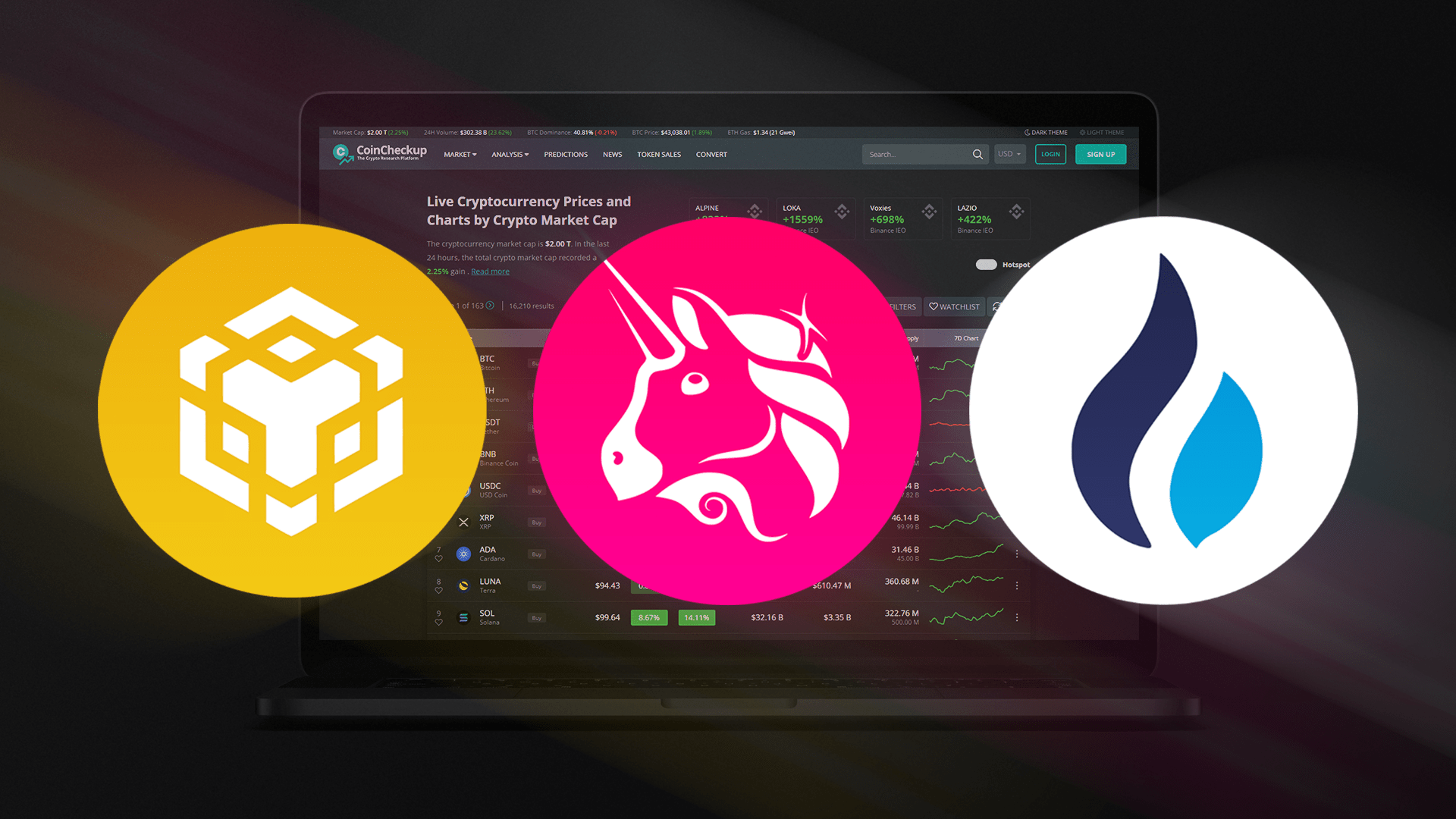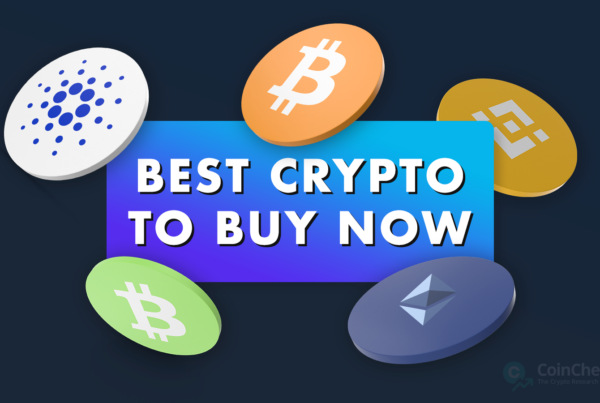
The total cryptocurrency market capitalization dropped by some $20 billion throughout last week, causing the cryptocurrency sector to enter Week 42 with a total valuation of only $945 billion. Judging by the fact that the total market capitalization is following a slightly decreasing trend, it seems more likely that the market will dip below $900 billion valuation before we will se market caps higher than $1 trillion again. Nevertheless, each week one can find several coins that stand out from the recently mostly negative general market trend. This week, we have identified the following three “exchange coins” – 2 belonging to CEX platforms and 1 belonging to a popular DEX protocol.

3. Binance Coin (BNB)
Binance Coin (BNB) was originally launched in 2017 as an ERC-20 token sold through an initial coin offering (ICO). In April 2019, the Binance rolled-out its native Binance Chain and all the existing Binance Coin ERC-20 tokens were replaced with BNB, which became the native cryptocurrency of the new blockchain. As of today, Binance Chain is still almost completely centralized, with Binance having complete control of block management. Binance gives users who utilize BNB to pay for trading, withdrawal and listing fees hefty discounts. While this used to be pretty much the only use case of BNB, the coin has a far greater utility now as it allows users to pay for gas fees, earn cashback on Binance Visa card purchases, stake BNB and participate in liquidity pools and other DeFi activities. BNB is also used to determine eligibility to participate in Initial Exchange Offerings (IEOs). Furthermore, the Binance ecosystem is continuously expanding, which means that new products and services are regularly added and many of them give BNB some new utility.
$574 million worth of BNB removed from circulation as part of the 21st BNB quarterly burn
On Thursday, October 13 Binance’s Auto-Burn program has initiated and completed already the 21st BNB quarterly burn, which forever removed 2,065,152 BNB, worth approximately $574 million from circualtion. In addition to the quarterly burns, Binance Smar Chain utilizes a real-time burning mechanism as well. The mechanism that was introduced with BEP95 in October 2021 burns 10% of the transaction fees in each block. During the last 7 days, more than $500,000 worth of BNB have been burned that way. Both burning mechanisms are slowly but steadily decreasing the supply of BNB, making this deflationary coin even more appealing to investors that are in for the long-term. In addition to the burn, BNB Chain developers have successfully patched the vulnerabilities in the cross-chain bridge connecting BSC and BNB Beacon Chain through the “Moran” hard fork that was deployed on October 12. These were the vulnerabilities that allowed a hacker to create more than $560 million worth of digital assets, or roughly 2,000,000 BNB in a massive exploit that took place on October 6. The exploit could have caused damage of significantly larger proportions if the Binance Smart Chain (BSC) validators had not reacted so swiftly. Because the validators put a stop on the blockchain’s operation almost immediately, the malicious actor only managed to move $100 million worth of BNB off-chain, while the remaining BNB were frozen before they could be transferred off of BNB Chain.

2. Uniswap (UNI)
UNI is the governance token of the automated market maker (AMM) protocol Uniswap. UNI tokens are ERC-20 tokens that allow holders to decide on the future of Uniswap by voting on proposals. Uniswap – the platform, which facilitates quick swaps between various Ethereum-based tokens, has recently been struggling to keep its users and market share because of high fees on Ethereum. In March this year the project released Uniswap V3, a new and improved version of the AMM protocol on Ethereum mainnet. In July 2021 Uniswap tried to reduce the costs of trades by launching on two Ethereum Layer 2 networks: Optimistic Ethereum and Arbitrum. In its 3 years of existence, Uniswap has pioneered several DeFi functionalities and supported more than $1.2 trillion in cumulative volume.
Uniswap Labs raised another $165 million, which will be invested into the development of new tools and products
Uniswap Labs has recently raised $165 million in Series B funding, which puts the valuation of the company to a whooping $1.66 billion. The round was led by the notable crypto investor Polychain Capital with participation of a16z, Paradigm, SV Angel, Variant Fund and others.
While the Tweet indicated that the funds would allow them to bring Uniswap’s services to even more people, Uniswap founder Hayden Adams disclosed that the funds will also be channelled into the development of new applications, tools, and products. Labs will reportedly invest into their web application, developer tools, NFT-related products, and the mobile market. The price of UNI saw a considerable uptick after the news was published, causing UNI to jump from below $5.6 to $6.5. UNI has since faced a slight readjustment, resulting in the price of $6.15 per token at the time of writing. In other news, Uniswap’s governance community has once again demonstrated its unity as it has confirmed Uniswap’s deployment on a privacy-focused Layer 2 solution zkSync with almost 100% votes in favour. With over 100 projects, including top DeFi protocols, committed to launching on zkSync mainnet, Uniswap could onboard some new users and further increase protocol activity by being present in zkSync ecosystem.

3. Huobi Token (HT)
Huobi Token (HT) is the native token of the Seychelles-based Huobi cryptocurrency exchange. Huobi was founded in China in 2013 by a computer engineer named Leon Li. Since than Huobi has grown to become one of the biggest crypto exchanges, with customers and offices all around the world. HT was launched in January 2018 and initially offered its holders classic exchange token rewards, such as trading fee discounts and rebates. Later, exchange developers expanded the HT use cases by granting HT holders the ability to vote on new token listings and participate in exclusive Initial Exchange Offerings (IEOs). Originally HT was an Ethereum-based token but today the token also serves as the native asset of the HECO Chain blockchain platform, where it is needed to pay for transaction fees. Nevertheless, HT can also be staked or delegated to running validator nodes. HT has a capped supply of 500 million, but the Huobi exchange regularly burns HT using a part of its profits, which is gradually reducing the total available supply.
Huobi’s new leadership has big plans for Huobi Token
With its +70% gain during the last 7 days, Huobi Token was the best-performing assets among the crypto top 100 last week. The reason for its positive price action lays in the developments concerning the recent change in ownership of the Huobi exchange. On October 8 Huobi published an announcement, in which they revealed that Leon Li Lin, the founder and controlling shareholder of Huobi Global has decided to sell his entire share in the company to About Capital in a deal worth around $1 billion. Two days after the contract has been inked, Chinese crypto journalist Colin Wu reported that the real buyer of Huobi and the main investor in About Capital is actually TRON’s founder Justin Sun. While Sun initially denied involvement, he soon disclosed on his Twitter account that he has joined Huobi’s board of advisors, which supports Wu’s claims. Sun, the alleged new owner, has also brought new verve into the company, as he stated he plans to revitalise the exchange. According to his Tweet, Huobi Token will play an important role in the revitalisation. He wrote:
“We know that the key to revitalizing Huobi is to empower HT, and HT can only thrive on Huobi! In the future, there will be many big moves around HT, including brand upgrade, heavy empowerment, and business cooperation.”
Apparently Huobi Token holders are happy to see the exchange waking up from stagnation. In addition, the big moves around HT could actually make the token more valuable in the future, which gave way to some speculative HT buying. Nevertheless, the price action proves that the investors’ sentiment is currently indeed very positive.



